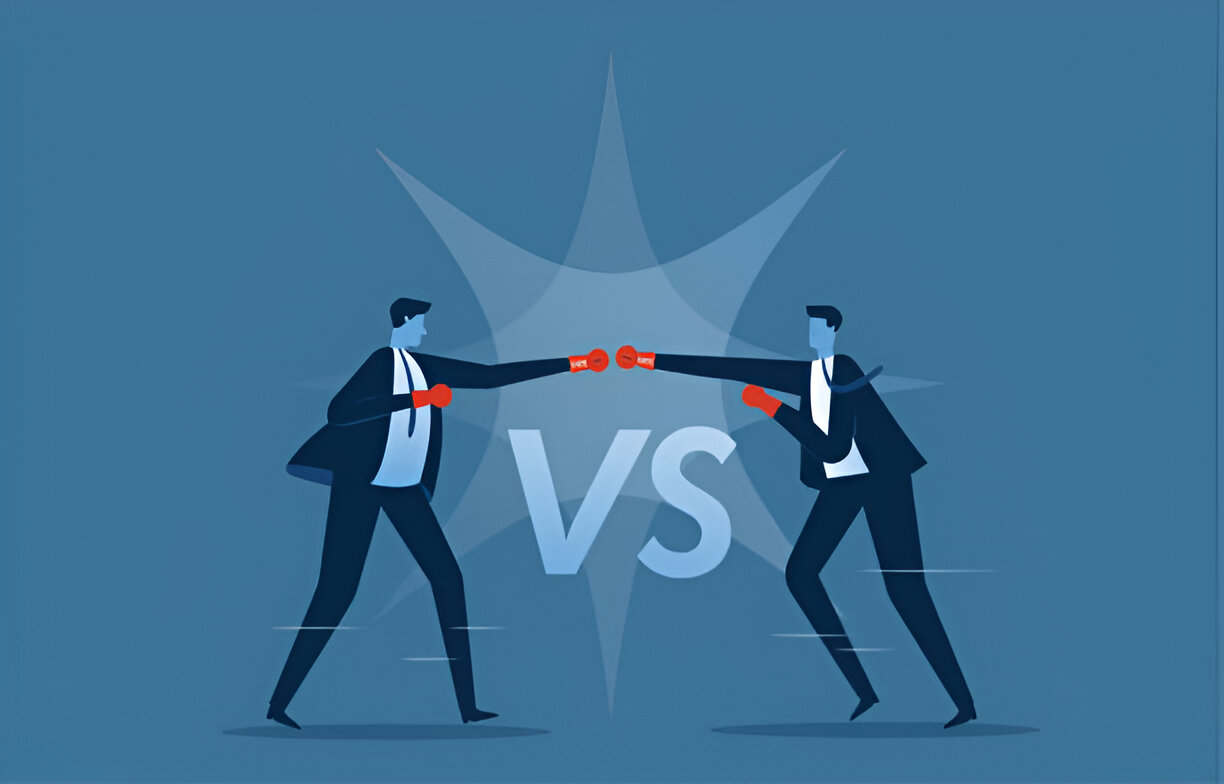Running an online business on Amazon gives you two primary fulfillment options: Fulfillment by Amazon (FBA) and Fulfillment by Merchant (FBM). Choosing the right one is essential to growing your business and maximizing profits. Both models have their pros and cons depending on your goals, resources, and type of products. This article explores both in detail and helps you decide which model suits your business best.
1. Understanding Amazon FBA
Fulfillment by Amazon (FBA) is a service where Amazon stores, packs, and ships your products on your behalf. You send your inventory to Amazon’s warehouses, and once a customer places an order, Amazon takes care of everything else. This includes customer service and returns.
Key Benefits of FBA:
- Prime Eligibility: Products enrolled in FBA are eligible for Amazon Prime, making them more appealing to millions of Prime members.
- Better Shipping Speed: Amazon handles logistics, offering fast and reliable delivery.
- Customer Support: Amazon manages returns and inquiries, saving sellers time.
- Higher Buy Box Potential: FBA sellers often have an edge in winning the Buy Box.
Challenges with FBA:
- Storage Fees: Monthly and long-term storage fees can add up, especially for slow-moving inventory.
- Less Control: Amazon handles packaging and shipping, so you have limited oversight.
- Prep Requirements: Products must be prepped according to Amazon’s guidelines before shipping to their fulfillment centers.
2. Understanding Amazon FBM
Fulfillment by Merchant (FBM) is when the seller lists the product on Amazon but manages inventory, shipping, and customer service themselves or through third-party logistics (3PL).
Key Benefits of FBM:
- More Control: Sellers control the entire fulfillment process, including packaging and branding.
- Lower Fees: No FBA fees, which can result in higher margins.
- Ideal for Large or Custom Products: Products that are bulky, expensive to store, or require special handling can be better managed by the seller.
Challenges with FBM:
- No Prime Badge: Unless using Seller Fulfilled Prime, products are not Prime-eligible.
- Slower Delivery Times: You need efficient logistics to match Amazon’s expectations.
- Customer Service Burden: You must handle inquiries, returns, and refunds directly.
3. Comparing Costs
FBA Costs:
- Fulfillment fees (per unit)
- Storage fees (monthly and long-term)
- Removal and disposal fees
- Labeling or prep fees (if required by Amazon)
FBM Costs:
- Shipping materials and postage
- Warehouse or storage space (if applicable)
- Customer service tools or staffing
- Returns management
When calculating profit margins, it’s important to include these operational costs. FBA might seem expensive at first, but the time and labor saved could offset the fees. FBM might appear cheaper, but the hidden cost of logistics and customer service can add up.
4. Which Is Better for Beginners?
FBA is generally easier for beginners due to its hands-off approach. New sellers often benefit from Amazon’s trusted delivery network and Prime badge, which increases sales potential. However, FBM can be better for those who already have infrastructure in place or are experienced in logistics.
FBA Advantages for Beginners:
- Quick entry to market
- Access to Amazon’s massive fulfillment network
- Reduced workload
FBM Advantages for Beginners:
- Lower upfront costs
- More control and flexibility
- Useful for testing new or niche products
- When to Choose FBA
- You sell fast-moving items with consistent demand.
- Your products are small and lightweight, reducing storage fees.
- You want to scale quickly without managing your own logistics.
- You’re targeting Prime members and want access to the Buy Box.
Real-Life Example: A seller offering mobile phone accessories might use FBA to handle high-volume sales during the holiday season, relying on Amazon’s infrastructure for faster delivery.
- When to Choose FBM
- You sell heavy, bulky, or fragile items.
- Your brand requires custom packaging and personalized fulfillment.
- You already have warehousing and shipping processes in place.
- Your product has a low turnover and is expensive to store in Amazon’s warehouses.
Real-Life Example: A seller offering custom handmade furniture might use FBM to maintain quality control and personalize each delivery.
- Hybrid Approach: Best of Both Worlds
Many sellers use both FBA and FBM depending on the product type. This allows flexibility and cost efficiency.
Hybrid Strategy Benefits:
- FBA for small, high-volume items
- FBM for large or seasonal items
- Diversifies risk and ensures continuity if one method faces disruptions
- Impact on Customer Experience
FBA often ensures quicker deliveries and standardized customer service. FBM allows for more personal touches, which some customers appreciate.
FBA Experience:
- Fast, reliable shipping
- Easy returns through Amazon
FBM Experience:
- Customized packaging and thank-you notes
- Direct communication with the seller
- Sales Channel Strategy
FBA allows for international expansion via Amazon’s Global Selling program. FBM works well for sellers using multiple platforms (e.g., Etsy, Shopify, eBay) who want unified control over fulfillment.
- Final Verdict: Which Is Best?
There is no one-size-fits-all answer. The right choice depends on your business model, product type, budget, and goals.
Choose FBA if:
- You want to automate fulfillment and scale quickly.
- You’re focused solely on Amazon sales.
Choose FBM if:
- You want more control and flexibility.
- You sell niche or bulky products.
Consider Hybrid if:
- You want to balance costs and control.
- You have a diverse product catalog.
Conclusion
Choosing between Amazon FBA and FBM is a strategic decision. Each has its strengths and challenges. By understanding your own business needs, costs, and capacity, you can make a smart choice that supports long-term growth. Start with what aligns best today and evolve your strategy as your business grows. Remember, success on Amazon isn’t just about fulfillment—it’s about creating value for your customers and adapting to what works best over time.
FAQ:
1. What is the difference between Amazon FBA and FBM?
FBA (Fulfillment by Amazon) means Amazon stores, packs, and ships your products, and handles customer service. FBM (Fulfillment by Merchant) means you handle storage, shipping, and support yourself or through a third-party provider.
2. Which option is better for beginners—FBA or FBM?
FBA is often better for beginners because Amazon takes care of logistics, giving you more time to focus on sales and marketing. However, FBM gives you more control and lower fees if you already have shipping experience.
3. Is FBA more expensive than FBM?
Yes, FBA generally has higher fees because it includes storage, packing, shipping, and customer service. FBM can be cheaper, especially for low-volume sellers or those shipping large or heavy items.
4. Does FBA help my products rank higher on Amazon?
FBA products are eligible for Prime and often get better visibility, which can lead to higher conversions and rankings. Amazon also prioritizes faster shipping, which FBA guarantees.
5. Who should choose FBM over FBA?
FBM is ideal for sellers with unique, heavy, or custom-made products, or those who already have a shipping system in place. It’s also a good fit if you want more control over your inventory and branding.
6. Can I use both FBA and FBM for the same product?
Yes, this is called a “hybrid model.” You can list the same product using both FBA and FBM to manage inventory more flexibly and meet different types of customer demand.
7. Which model offers better customer service—FBA or FBM?
FBA offers Amazon-managed customer service, which is quick and reliable. With FBM, the quality of customer service depends entirely on the seller’s own system and responsiveness.
8. What are the storage fee differences between FBA and FBM?
FBA charges monthly storage fees and long-term storage fees if inventory remains unsold. FBM sellers store inventory on their own or with a 3PL, which may cost less or more depending on the setup.
9. Which model is better during peak seasons or holidays?
FBA is generally better during peak seasons due to Amazon’s fulfillment efficiency. However, delays can still occur, and inventory must be sent to Amazon in advance. FBM may face challenges unless you have a strong fulfillment system in place.
10. How do I decide between FBA and FBM for my business?
Consider your product type, shipping capabilities, budget, and growth goals. If you want convenience and access to Prime customers, go with FBA. If you prefer control and cost savings, FBM might be a better fit.





